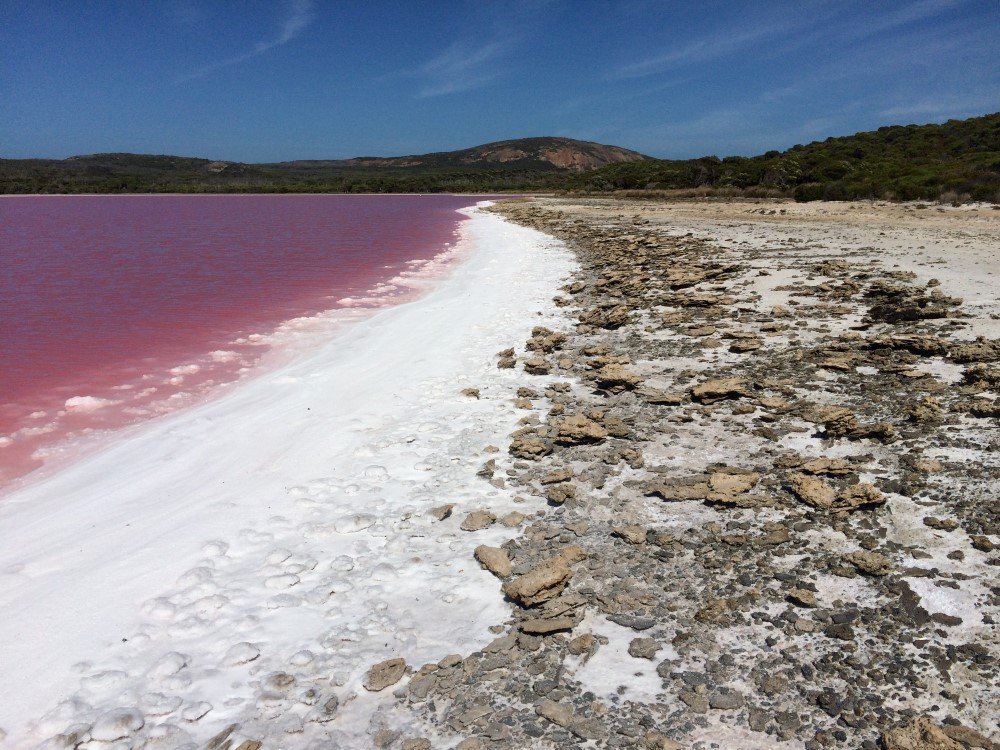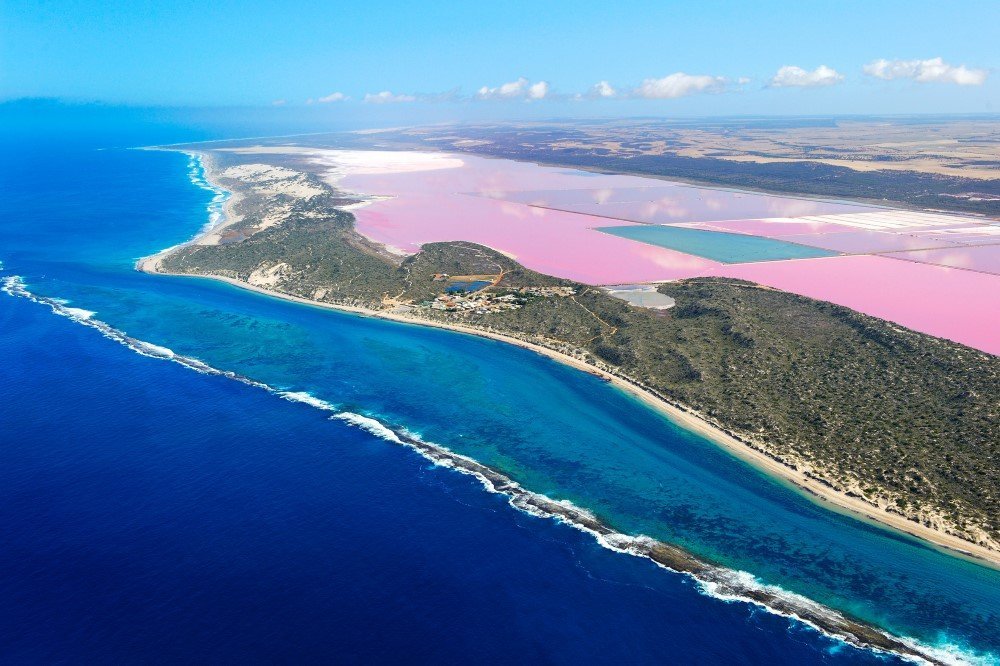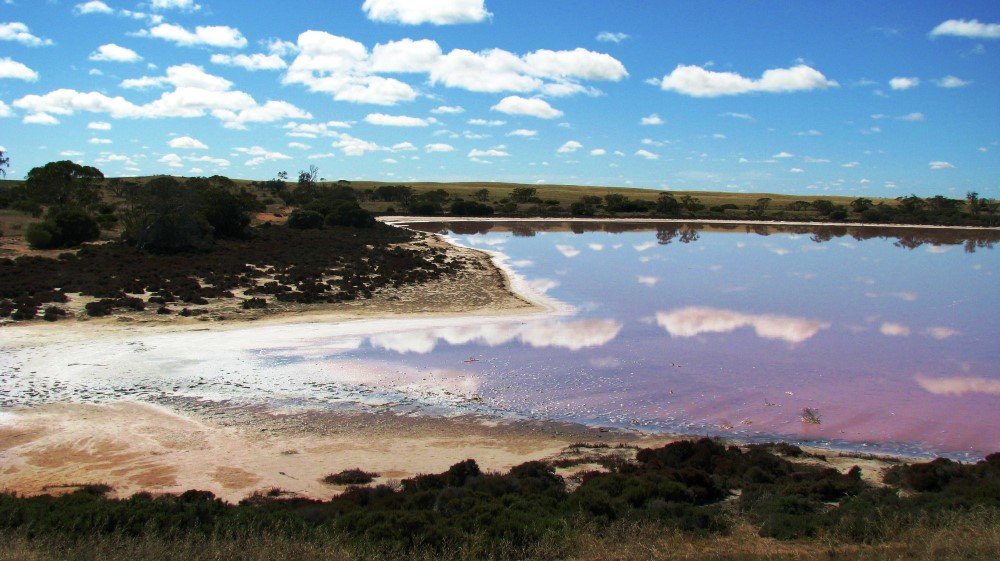How an Australian lake turned bubble-gum pink

Australia is home to many unique geological phenomena, but few are as bizarre as our pink-coloured lakes. These ‘strawberry-milk’ lakes look good enough to drink, but are actually some of the saltiest bodies of water in the world.
Lake Hillier is one of Australia’s most famous pink lakes, located off the southern coast of Western Australia on Middle Island. British explorer, Matthew Flinders, discovered the lake in January 1802 when he climbed the highest peak on the island and noticed “a small lake of a rose colour”. The lake turned out to be as saline as the Dead Sea, and Flinders used the opportunity to top up his ship’s salt stores.

No one really knows exactly what causes the bizarre colouring of Lake Hillier, but a team of researchers from the eXtreme Microbiome Project (XMP) have identified a few probable suspects.
In 2015, Ken McGrath, a researcher for the XMP, collected genetic information from Lake Hillier sediment and water samples. Not many organisms can survive on lake beds made of solid salt, but extremophiles like the ones found in Lake Hillier thrive in this environment. The goal of the research was to identify the various extremophiles living in the lake that could be responsible for its remarkable colour.
Analysis of the material showed around 10 species of salt-loving bacteria, archaea and several species of Dunaliella algae. Nearly all these organisms are pink, red or salmon-coloured, and are the probable culprits of the lake’s strange colour.

Most surprisingly, 33 per cent of the millions of DNA sequencing reads that the team generated from the lake water samples matched a single species of bacterium, called Salinibacter ruber.
“The most abundant DNA that we recovered from the lake came from a bacterium called Salinibacter ruber, a salt-loving halophile which also produces red pigments,” said Ken McGrath.
For a long time it was assumed that micro algae was responsible for Lake Hillier’s pink colour. The findings from XMP, however, reveal the pink colour most probably arises from a bacterium.
“Dunaliella alga is present but it’s not the dominant organism by any means,” said Ken. “Our genetic sequencing confirms that it is the bacterium that is the real reason the lake is pink.”

The dominant bacterium produces a pigment, called bacterioruberin, which helps the organism harvest light for energy. Unlike the pigments produced by algae, which are confined to the chloroplasts, bacterioruberin is spread across the entire bacterial cell. This means, when you look at the lake, you mostly see the pink colour of the bacteria.
“It just goes to show you can’t rely on what people think is right, you really have to do the research,” said Ken.
Besides Lake Hillier, there are four pink lakes in Victoria’s Murray-Sunset National Park, Lake Crosbie, Lake Becking, Lake Kenyon and Lake Hardy, and there is also a pink inlet located between Geraldton and Kalbarri in Western Australia, called Hutt Lagoon.
This natural phenomenon is not just confined to Australia, either. Lake Retba, in Senegal, and Dusty Rose Lake, in Canada, are just some of the pink lakes that can be seen overseas.

The bizarre colour of these lakes varies with seasons, cloud cover and time of day. For instance, the lakes are most vibrant on overcast days, after rains wash in fresh nutrients, and are especially pink at mid-morning and sundown. Depending on these factors, the spectrum of colour can span from bubble-gum pink to lilac purple.
“I personally would like to get back to Lake Hillier and look at how the lake changes over time. Is it a stable environment? Will it always be that colour or is it modifying its bacterial population?” said Ken. “Perhaps at some point in the future it will change its colour and no longer be pink.”
The results from the XMP study are due to be published in the coming months.




